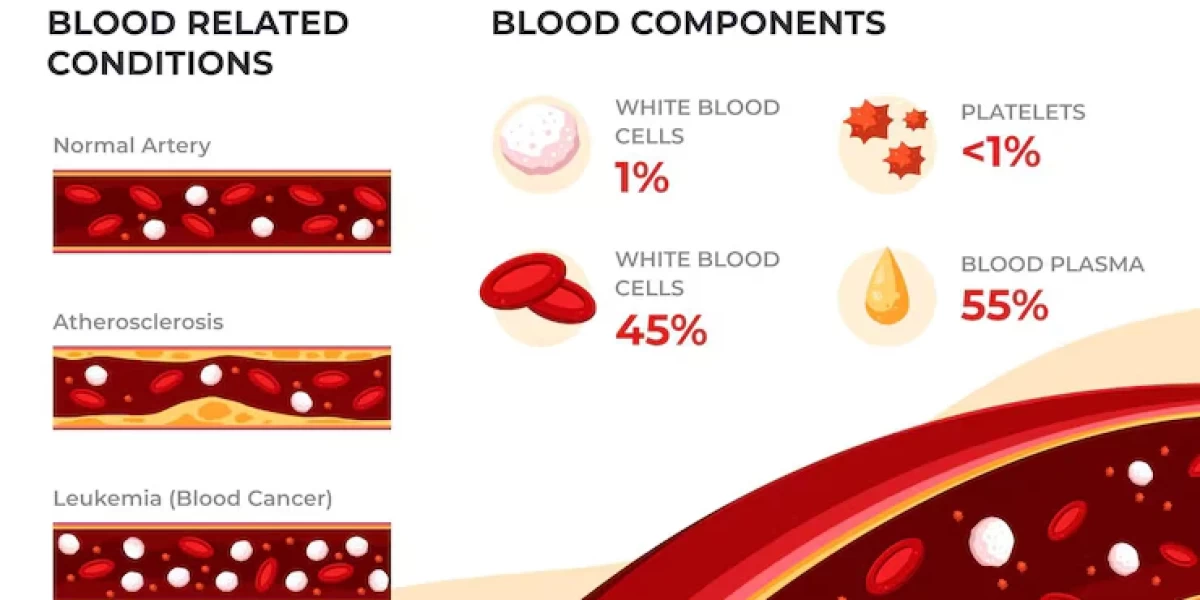1. Introduction
Blindness is more than just the loss of vision; it is a life-changing condition that affects millions of people worldwide. It not only impacts the individual's ability to see but also challenges their independence, mental health, and overall quality of life. In societies where vision is often taken for granted, blindness can lead to feelings of isolation and dependency. To build a more inclusive world, it's essential to understand blindness in all its forms, learn about its causes, and support those affected by it.
Blindness can be defined as the inability to see, either fully or partially. It can range from total blindness, where no light or shapes can be perceived, to partial blindness, where some degree of vision is retained. Understanding the different types, symptoms, and causes of blindness helps foster empathy and promotes greater awareness in society. Additionally, knowing how to diagnose blindness early can help prevent further vision loss, improving the quality of life for those affected.
2. What is Blindness?
Blindness is a term used to describe severe visual impairment that limits an individual's ability to perform everyday tasks. Total blindness refers to a complete lack of sight, while partial blindness refers to significant vision loss but some level of visual perception remains. Blindness is often measured by visual acuity tests, which assess how clearly someone can see. A visual acuity of 20/200 or worse, even with corrective lenses, is typically classified as legal blindness.
There are varying degrees of visual impairment, ranging from mild vision loss to total blindness. Legal blindness is a critical term used to qualify individuals for disability benefits and other support services. Understanding these classifications is key to offering the right kind of help to those who need it.
3. The Three Types of Blindness
Blindness is a complex condition that can manifest in various forms, each affecting individuals differently. The three primary types of blindness—congenital blindness, acquired blindness, and legal blindness—each have unique characteristics and implications for those who experience them.
-
Congenital Blindness: This type of blindness is present from birth, often due to genetic factors or developmental issues during pregnancy. Congenital blindness occurs when the eyes or the visual processing areas of the brain fail to develop properly. Conditions like Leber's congenital amaurosis, an inherited retinal disorder, are common causes. Children born with congenital blindness often face significant challenges in their early development, particularly in terms of learning and mobility. However, with early intervention, specialized education, and supportive technologies, many individuals can lead fulfilling lives despite this condition. Early diagnosis and management are crucial for optimizing a child's ability to adapt to their environment.
-
Acquired Blindness: Unlike congenital blindness, acquired blindness occurs later in life due to illness, injury, or age-related conditions. It can be caused by diseases such as glaucoma, cataracts, or diabetic retinopathy. Acquired blindness may progress gradually, as is common with diseases like macular degeneration, or it can happen suddenly due to trauma or accidents. For individuals who lose their sight later in life, the emotional and psychological impact can be profound. They often need to relearn how to perform everyday tasks, and many may struggle with feelings of isolation or frustration. Rehabilitation services, mobility training, and mental health support are essential in helping individuals cope with the drastic lifestyle changes brought about by acquired blindness.
-
Legal Blindness: This type of blindness is defined not by the complete absence of vision but by the severity of visual impairment. In most countries, legal blindness is defined as having a visual acuity of 20/200 or worse in the better-seeing eye, even with corrective lenses, or a visual field limited to 20 degrees or less. Legal blindness qualifies individuals for certain benefits and accommodations, such as disability support and access to assistive technologies. While people with legal blindness may retain some useful vision, they still face significant challenges in navigating their daily lives, such as difficulty recognizing faces or reading standard print.
Each type of blindness presents unique challenges and requires tailored interventions to support the individual's needs. Understanding these distinctions is essential for fostering empathy and providing appropriate resources for those affected.
4. Signs and Symptoms of Blindness

The signs and symptoms of blindness can vary greatly depending on the underlying cause and the severity of vision loss. Recognizing these symptoms early is vital for prompt diagnosis and treatment, potentially preventing further deterioration of vision.
-
Blurry Vision: One of the most common signs of visual impairment is blurry or distorted vision. Individuals may struggle to see objects clearly or may have difficulty focusing on details, such as reading fine print or recognizing faces from a distance.
-
Loss of Peripheral Vision: Another early indicator of vision loss is the reduction of peripheral vision, also known as "tunnel vision." This is a hallmark symptom of glaucoma, a condition that damages the optic nerve and can lead to blindness if left untreated. People with this symptom often find it challenging to see objects or movement at the edges of their visual field.
-
Difficulty Seeing in Low Light: Night blindness, or the inability to see clearly in dimly lit environments, is a common symptom of retinitis pigmentosa and other retinal disorders. Individuals with this condition may struggle to navigate in the dark, making tasks like driving at night particularly dangerous.
-
Sensitivity to Light: Some individuals may experience heightened sensitivity to light (photophobia), which can cause discomfort or pain when exposed to bright lights. This symptom is often associated with conditions like cataracts or corneal diseases.
-
Sudden Vision Loss: Sudden or rapid vision loss is a medical emergency and requires immediate attention. It can be caused by retinal detachment, stroke, or optic neuritis (inflammation of the optic nerve), all of which can lead to permanent blindness if not treated promptly.
-
Halos or Floaters: Seeing halos around lights or floating specks in the visual field are common symptoms of cataracts or retinal problems. While these symptoms may seem minor at first, they can signal the early stages of a condition that could progress to blindness if untreated.
Early detection and intervention are crucial in managing these symptoms and preventing further vision loss. Regular eye exams, particularly for individuals with risk factors such as diabetes or a family history of eye disease, play a key role in maintaining visual health.
5. Causes of Blindness
Blindness can result from a variety of causes, ranging from genetic disorders to environmental factors. Understanding the root causes of blindness is essential for both prevention and treatment. The following are typical causes:
-
Genetic Factors: Many individuals are born with inherited conditions that lead to blindness. Genetic disorders like retinitis pigmentosa and Leber’s hereditary optic neuropathy can cause progressive vision loss from an early age. These conditions are often passed down through families and can lead to complete blindness over time.
-
Eye Diseases: Several eye diseases are major contributors to blindness. Glaucoma, for instance, is a leading cause of irreversible blindness worldwide. It damages the optic nerve, often without noticeable symptoms until significant vision loss has occurred. Diabetic retinopathy, caused by damage to the blood vessels in the retina due to high blood sugar levels, is another significant cause of blindness, particularly in individuals with poorly managed diabetes. Cataracts, a clouding of the eye's lens, are a leading cause of blindness in older adults, though they can be treated with surgery. Age-related macular degeneration (AMD) is another common cause of blindness in people over the age of 60, affecting the central vision necessary for reading and recognizing faces.
-
Injuries and Trauma: Physical injuries to the eyes or the surrounding areas of the head can lead to blindness. These injuries might be the result of accidents, sports injuries, or violence. Severe trauma can cause retinal detachment, damage to the optic nerve, or rupture of the eyeball, all of which can result in permanent vision loss.
-
Environmental Factors: In some cases, blindness can be linked to environmental factors, particularly in low-income or developing regions. For example, lack of access to clean water and sanitation can lead to trachoma, an infectious disease caused by bacteria that damages the cornea. Trachoma is a leading cause of blindness in some parts of the world, particularly in areas with poor hygiene and limited healthcare access.
-
Statistics on Blindness: According to the World Health Organization (WHO), an estimated 39 million people are blind worldwide, with another 285 million experiencing some form of visual impairment. The leading causes of blindness globally are cataracts, uncorrected refractive errors, and glaucoma. In many cases, blindness is preventable or treatable, highlighting the importance of early detection and access to eye care services.
By understanding the various causes of blindness, individuals and healthcare providers can take proactive steps toward prevention and treatment. Whether through genetic screening, regular eye exams, or addressing environmental risk factors, there are numerous strategies to reduce the prevalence of blindness and improve the quality of life for those affected.
6. Risk Factors for Blindness
Blindness is a condition influenced by multiple factors, many of which can either increase the likelihood of its occurrence or exacerbate its severity. Being aware of these risk factors can help individuals take proactive steps toward prevention and early detection, which are key in minimizing the impact of vision loss.
One of the most prominent risk factors for blindness is age. As people get older, they become more susceptible to eye conditions like age-related macular degeneration (AMD), cataracts, and glaucoma, all of which can lead to severe visual impairment if left untreated. AMD, in particular, affects the central part of the retina, causing blurred vision or even blindness in those over 60 years old. Cataracts, a clouding of the eye's lens, is another age-related issue that, if not treated, can result in total blindness.
Family history plays a crucial role as well. Certain genetic conditions, such as retinitis pigmentosa and congenital glaucoma, can be passed down from one generation to the next. If an individual has a family history of blindness or significant eye disease, they are at a higher risk of developing similar issues themselves. Genetic predisposition highlights the importance of regular eye check-ups, especially for those with a known history of visual impairments in the family.
Lifestyle choices are another significant factor contributing to blindness. Smoking, for instance, has been linked to a higher risk of developing cataracts and AMD. Excessive alcohol consumption and a diet lacking in essential nutrients, such as vitamin A, can also negatively impact eye health. UV exposure, often overlooked, can lead to damage of the retina and increase the risk of cataracts. Wearing UV-protective sunglasses and leading a healthy lifestyle, including a balanced diet rich in antioxidants, can go a long way in protecting one’s vision.
Pre-existing health conditions, such as diabetes, also pose a significant risk for blindness. Diabetic retinopathy, a complication of diabetes, damages the blood vessels in the retina, potentially leading to vision loss. Individuals with high blood pressure or heart disease are similarly at risk, as these conditions can affect the overall health of the eye's vascular system.
In conclusion, understanding the risk factors associated with blindness, including age, family history, lifestyle, and underlying health conditions, is essential. Raising awareness about these risks empowers individuals to make informed decisions, such as undergoing regular eye examinations, adopting a healthy lifestyle, and seeking early treatment when necessary. Preventative measures can often delay or even prevent the onset of blindness, ensuring a better quality of life for those at risk.
7. Diagnosis of Blindness
The diagnosis of blindness or severe visual impairment is a comprehensive process that involves a series of tests and examinations designed to assess the overall health of the eyes and determine the extent of vision loss. Early diagnosis is critical, as it can lead to more effective treatment and intervention strategies, potentially preserving remaining vision and improving quality of life.
The first step in diagnosing blindness typically involves a thorough eye exam conducted by an optometrist or ophthalmologist. During this exam, the healthcare professional assesses the patient’s visual acuity—a measure of how clearly an individual can see. A Snellen chart, featuring rows of letters that decrease in size, is commonly used for this purpose. A result of 20/200 or worse, even with corrective lenses, is classified as legal blindness.
In addition to visual acuity, visual field tests are performed to measure peripheral vision, which can be crucial for diagnosing conditions like glaucoma. Glaucoma gradually reduces side vision, and early detection can slow its progression. A visual field test helps map out the range of a person’s vision, identifying any blind spots or areas where sight is limited.
Imaging tests are also vital in the diagnostic process. Optical Coherence Tomography (OCT), for example, provides high-resolution images of the retina, allowing doctors to detect damage or abnormalities that may not be visible during a regular eye exam. This is especially useful in diagnosing conditions like diabetic retinopathy or macular degeneration. Slit-lamp examinations are another important tool, enabling doctors to examine the structures at the front of the eye, such as the cornea and lens, in great detail.
Patient history plays a significant role in diagnosing blindness as well. Healthcare professionals take into account any family history of eye diseases, current medical conditions like diabetes, and lifestyle factors that could contribute to vision problems. A detailed patient history helps guide further testing and ensures a more accurate diagnosis.
In some cases, additional diagnostic tools may be necessary, such as ultrasound to visualize the eye’s internal structures or fluorescein angiography, which involves injecting a dye into the bloodstream to highlight blood flow in the retina. These tests provide doctors with a clearer understanding of the underlying causes of vision loss, enabling them to make more informed treatment decisions.
The diagnostic process for blindness is comprehensive and multifaceted, combining a range of tests and examinations to evaluate the extent and cause of visual impairment. Early detection is key, as it allows for timely intervention, potentially slowing the progression of vision loss or providing access to assistive technologies that can help improve daily functioning.
8. Treatment for Blindness
While blindness, especially total blindness, may not always be reversible, there are various treatment options available that can significantly improve the quality of life for individuals with severe visual impairments. These treatments range from medical interventions to assistive technologies and rehabilitation programs designed to help individuals live as independently as possible.
For some individuals, medical interventions may be the first line of defense against blindness. Conditions like cataracts can often be treated through surgery, where the clouded lens is replaced with an artificial one, restoring vision in many cases. Glaucoma is typically managed with prescription eye drops or, in more severe cases, surgery to relieve the pressure inside the eye and prevent further damage to the optic nerve. Similarly, diabetic retinopathy may be treated with laser surgery to prevent further blood vessel damage in the retina.
In cases where medical intervention cannot fully restore vision, assistive technologies play a crucial role in enhancing the daily lives of the blind or visually impaired. Screen readers, which convert text on a computer or phone screen into speech, enable individuals to access digital content. Braille devices and magnifiers also help people with visual impairments read and navigate their surroundings more effectively. Advances in technology, such as smart glasses and apps designed to describe visual environments, have made it easier for visually impaired individuals to gain independence.
Rehabilitation programs are another critical component of treatment for blindness. These programs typically include orientation and mobility training, where individuals learn how to safely navigate their environment using tools like white canes or guide dogs. These mobility aids provide blind individuals with the ability to move independently and confidently, significantly enhancing their quality of life. Additionally, vocational training is often offered to help individuals develop skills needed to perform tasks at work, enabling them to maintain employment despite their visual impairment.
For those who experience partial blindness or low vision, low-vision rehabilitation focuses on maximizing the use of remaining vision. This may involve training to use optical devices, like magnifying glasses or telescopic lenses, to improve the ability to read or perform other tasks. Specialized training on how to adapt living spaces, such as improving lighting or using tactile labels, also helps individuals maintain independence.
9. Living with Blindness: Coping Strategies, Support Systems, and Independence
Living with blindness presents numerous challenges that go beyond the simple inability to see. Every day, individuals who are blind or visually impaired face hurdles related to mobility, communication, and performing daily tasks that sighted people might take for granted. However, with the right strategies, support systems, and resources, it is possible to lead an independent and fulfilling life.
One of the primary challenges for individuals with blindness is navigating their environment. Simple activities like crossing the street, grocery shopping, or using public transportation can become complex. In response, many visually impaired people rely on mobility aids such as canes or guide dogs. Canes help individuals detect obstacles in their path, while guide dogs are trained to lead their handlers safely through various environments. Assistive technology also plays a critical role, with GPS-enabled devices providing directions or alerting individuals to hazards in their surroundings.
In addition to physical navigation, social interactions can pose challenges. In many cases, visually impaired individuals may feel isolated or misunderstood, especially in social settings where non-verbal cues such as eye contact, facial expressions, or body language play an important role. To bridge this gap, many people develop strong communication skills, relying heavily on verbal interaction to convey thoughts and emotions. Organizations also provide social support, offering workshops and forums where individuals can connect, share experiences, and build networks of support.
Coping strategies for living with blindness are as varied as the individuals themselves. Many rely on technology to increase independence. Screen readers, voice-activated assistants, and magnification software allow blind individuals to work on computers, use smartphones, and access information online. This technology has become crucial in fostering independence, enabling individuals to perform work tasks, communicate, and even manage daily schedules without relying on sighted assistance.
Moreover, orientation and mobility training is a critical aspect of rehabilitation for individuals who have lost their sight. Specialists work with blind or visually impaired individuals to help them navigate their surroundings safely and confidently. This training empowers them to use tools like canes and GPS systems effectively and teaches them techniques to manage everyday activities such as cooking, dressing, and cleaning.
Support systems, including family, friends, and specialized organizations, also play a crucial role in the lives of individuals with blindness. These networks offer emotional support, practical assistance, and access to resources. Various non-profits and government programs provide services like vocational training, job placement, and counseling, helping visually impaired individuals lead productive, independent lives.
While the challenges of living with blindness are undeniable, many individuals demonstrate remarkable resilience. They find ways to adapt, utilizing their strengths and leveraging available resources to overcome obstacles. Importantly, communities can contribute by fostering an inclusive environment where accessibility is prioritized. This includes advocating for universal design in public spaces, ensuring that websites and applications are accessible, and educating others about the capabilities of those who are blind.
Ultimately, with the right tools, support, and mindset, people who are blind can achieve a level of independence that allows them to pursue their passions, build careers, and enjoy meaningful relationships. The journey may be difficult, but it is one that countless individuals navigate with courage and determination.
10. Conclusion
In conclusion, blindness is a condition that affects not only vision but also various aspects of daily life, from mobility to communication. Understanding the different types of blindness, their causes, and how they impact individuals is crucial for fostering a more inclusive society. This article has delved into the challenges that people living with blindness face, the coping mechanisms they employ, and the importance of support systems in helping them maintain independence.
Blindness is not just a personal struggle but a societal issue that requires collective attention and action. By promoting awareness, supporting research, and advocating for the rights of those affected, we can contribute to building a more accessible world. Technological advancements, medical research, and public policy all play vital roles in improving the quality of life for visually impaired individuals, but it is up to each of us to create a culture of empathy, respect, and inclusion.
Whether through supporting local organizations, donating to research efforts, or simply educating ourselves about the experiences of those living with blindness, we can make a difference. The journey toward inclusivity starts with understanding and continues with advocacy, compassion, and action. Let’s work together to ensure that individuals who are blind or visually impaired have the tools, resources, and opportunities they need to lead fulfilling lives.
11. Frequently Asked Questions(FAQ's)
- What is the definition of blindness?
- Blindness is the inability to see due to a total or significant loss of vision.
- What is human blindness?
- Human blindness refers to the condition where a person is unable to see, either partially or completely.
- What is blindness caused by?
- Blindness can be caused by various factors, including genetic conditions, infections, injuries, and diseases such as glaucoma, cataracts, and macular degeneration.
- What is blind short answer?
- A person who is blind has a significant or complete loss of vision.
- What is called blind?
- A person who is unable to see is called blind.
- What is word blindness?
- Word blindness is a neurological condition that affects a person's ability to recognize written words, also known as alexia or dyslexia.
- Who definitions of blindness?
- The World Health Organization (WHO) defines blindness as visual acuity of less than 3/60 or a corresponding visual field loss to less than 10 degrees in the better eye with the best possible correction.
- What is name blindness called?
- Name blindness, or the inability to recognize familiar faces, is called prosopagnosia.
- What is word blindness called?
- Word blindness is commonly referred to as alexia or dyslexia, which affects the ability to read and recognize written words.
*Image credits- freepik*
Important Notice:
The information provided on “health life ai” is intended for informational purposes only. While we have made efforts to ensure the accuracy and authenticity of the information presented, we cannot guarantee its absolute correctness or completeness. Before applying any of the strategies or tips, please consult a professional medical adviser.












